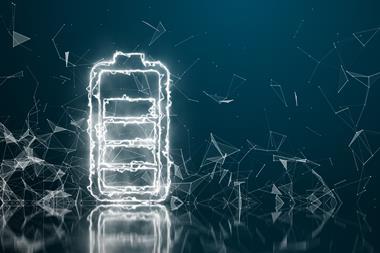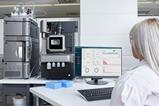You can watch the video version of this podcast above, or listen to the audio-only version from the Chemistry in its element podcast feed here:
Or read the edited transcript below.
Ben Valsler
We’re in the midst of a climate crisis. In response, countries are pledging significant action to reduce their carbon emissions – the European Union intends to be carbon neutral by 2050, for example, and China by 2060. The Paris Climate Agreement was adopted by almost 200 parties in 2015, obliging countries to set out their plans to reduce greenhouse emissions in increasingly ambitious five-year cycles. And carbon consciousness has also made its way into corporate culture, with organisations like BASF aiming for carbon neutral growth by 2030, and General Motors aiming for 2040.
When discussing large-scale carbon reduction, the focus is often on power generation – replacing fossil fuels with solar, wind or tidal energy – or on new technologies like carbon capture and storage. But for a truly sustainable future, we need a wider view.
Chris Stumpf
I’m Chris Stumpf, and I work at Waters Corporation. I’m a senior manager, and I focus on market development. Really, what I’ve been looking at pretty extensively as of late is the area of electronics, and also sustainability. I’ve kind of developed the title of ’green ambassador’ within the company because I’m tying in a lot of the electronics, especially lithium ion batteries. It connects into carbon neutrality, but also into supporting sustainability goals of a lot of corporations and a lot of countries around the world as they’re trying to meet their carbon neutrality stated goals.
Ben Valsler
Waters Corporation is the world’s leading specialty measurement company – they don’t make lithium ion batteries or research new sustainable materials themselves, but they develop chromatography, mass spectrometry and thermal analysis techniques that enable scientists and industry worldwide to answer cutting edge questions.
Chris Stumpf
I think there is a common thread with this, and I think a lot of this is really accelerated due to Covid-19. What we’ve discovered is that supply chains are being disrupted and there’s this need to be able to manufacture within countries. A lot of the supply chain, as it stands now, is not sustainable. So one way of reducing that is to use 5G, which enables the Internet of Things, which enables automated manufacturing. There’s also artificial intelligence, which can be focused directly on managing specific aspects of the supply chain, and continuous manufacturing, things like that. The underlying technology for a lot of that is energy, and how you can store and use energy where it needs to be used. One way to do that is with batteries, specifically lithium ion batteries. They’re the dominant battery type today. Currently, they enable electric and hybrid electric cars, and they’re used in the electric grid, for smart grids. Their use is going to be very pervasive across the landscape. In addition, they’re heavily used in consumer electronics, our smartphones and our laptops, and all these types of devices that we use nowadays.
Ben Valsler
While all of these technologies play a role in fostering development and reducing our reliance on existing, outdated infrastructure, batteries perhaps seem the least exciting on the list. It’s only about 30 years since the first commercial lithium ion battery, but in that time they’ve become ubiquitous, commonplace, even forgettable.
Chris Stumpf
AI and 5G receive a lot of publicity. I mean, they’re even in pop culture – you can think about Stephen King’s novel Cell, based on creating zombies with cellphone towers. And Steven Spielberg had a movie in 2001, based on artificial intelligence and creating like an [artificial] human person.
But right now, we’re taking this lithium ion battery technology for granted. It’s everywhere: it’s in our laptops and our cell phones. And there’s still a lot to be done.
The chemistry Nobel prize winners in 2019, Goodenough, Wittingham and Yoshino-san, said there are six things that still need to be done with regards to research: reducing the cost, improving the safety, increasing the charge density. For example, if you’re going to put these lithium ion batteries on an aeroplane, or a big tractor-trailer truck or something like that, you need a lot more energy density.
Then there’s the question of whether lithium ion battery technology, as it’s being practised today, with the liquid electrolyte fluid and the cathode and anode, is the right approach. Should we go with another type of technology? Do we use solid state, for example? Or do we replace the electrodes with other types of technology? The lithium and cobalt that are in the anode and cathode are not really that sustainable – it’s a bit difficult to justify this from a sustainability perspective. Could you perhaps replace some of that with more common metals like sodium? There’s a lot of opportunity here for really basic R&D to decide which direction to go in, and which is the most commercially viable option.
Ben Valsler
Sustainability means different things to different people. For a business strategy to be sustainable, it needs to ensure profits are greater than costs. But this can conflict with the environmental bottom line – ensuring no environmental or ecological damage to sustain the natural world for generations to come. Taking a global view, the United Nations has set out 17 sustainable development goals, which include affordable and clean energy, climate action and responsible consumption and production alongside gender equality, sanitation, peace and justice.
Chris Stumpf
In addition to a clean environment, they also want to promote civil stability, because they want to minimise extreme wealth inequality to reduce the possibilities of war. So with regards to lithium ion batteries, that framework of sustainability and trying to source your materials plays a part in those 17 development goals of the United Nations. Thinking about the Paris Climate treaty, if we can maintain our carbon emissions to 1990 levels, then we can arrest the increase in the Earth’s temperature. Basically, that justifies the investment in all this R&D for lithium ion batteries and all the products they are going into.
Yoshino-san talked about lithium ion batteries being the bedrock of the sustainable society. But there’s other things that we don’t quite realise, until we get to that world of having a lot of our consumer electronics and cars and aeroplanes and things like that running on lithium ion batteries or another alternative. It’s an enabling technology. It’s playing a small part in this overall scheme of sustainability. It’s not the only thing that’s going to help with this, because it’s kind of a hybrid situation where we have lots of things that we need to do in order to reach a sustainable future, but it’s the foundation of that, in my opinion.
Ben Valsler
If batteries are to be the bedrock of the sustainable society, it’s vital that we understand how to tailor them to specific uses – the battery in your laptop has a very different specification to the ones in the latest electric cars. This is where measurement technologies come into their own, helping with everything from blue-skies research to efficient manufacture.
Neil Demarse
Hi, my name is Neil Demarse. I am a product manager for our microcalorimetry products.
Because they’re contained and non-moving, you can think of batteries as a machine almost. It’s a complex device. There’s not a lot of techniques that can be used to study whole cell batteries. A lot of them are destructive techniques. Having a test that you can use to look at the chemicals separately, but also look at whole cell batteries is important. That’s where calorimetry really has a very important contribution to the research field.
Research is also starting to look at bringing in some of the tools that biochemists or biopharmaceutical sciences are using because of their sensitivity: HPLC and mass spectrometry. There’s also cryo EM, which was historically used just in protein science; now, it’s being carried over into material characterization for batteries. As the batteries change and the performance demands accelerate, that’s where they’re drawing in some of these tools that wouldn’t traditionally be used by chemical engineers or chemists. There’s not a one-size-fits-all battery, so there’s going to be a lot of research to determine how best to build certain batteries for certain applications.
Chris Stumpf
In order to think about things like safety or energy density, as far as an analytical characterization perspective, you have to go back and think about the battery itself. There’s four primary things that you have to think about when you when you think about a battery. There’s the anode and the cathode, and we’re all familiar with the terminals of batteries – that is basically the anode and the cathode. Inside, there is the electrolyte. There’s additives and all this stuff that is put in there partly to enhance the performance of the battery, but also to suppress potential fires and things like that. Then on the inside, there is a polymer separator. Its purpose is basically to prevent a short circuit between anode and cathode. If you actually have a short circuit – if the polymer gets punctured, or if it shrinks – the battery gets hot very quickly. And if the battery gets hot very quickly, it can cascade because a lot of the time, these cars will have thousands of these batteries in in a battery pack. It can cascade like dominoes.
Neil Demarse
Calorimetry can tell you how fast reactions are happening, how much of a reaction is happening, even the fact that there is a reaction happening [at all]. So a researcher might have some data on their chemistry before it goes into the battery, or if you were to cut it open, but calorimetry tells you how all those components together react – are there reactions in there that we don’t want? We’re measuring heat; do those reactions get too hot?
The chemistry that goes into the battery is going to help the charge density and the battery life cycle. Safety is also something that can be looked at early on in the R&D process to make sure that chemicals are compatible. High-precision coulometry is another technique that’s paired with calorimetry to understand these parasitic reactions, the small minute reactions that researchers want to understand because it points directly to how good their battery’s going to be.
Chris Stumpf
But you’ve also got the capabilities of really understanding the chemistry that’s going on, and all the side reactions. These side reactions basically rob the battery of its main goodness: the power that it’s generating. If you can understand that from a molecular perspective, with techniques such as mass spectrometry, or maybe for the whole battery itself using battery calorimetry, then you can really get to understand how you can actually make this battery last 20 years, 40 years, 100 years.
Ben Valsler
Fine-tuning the chemistry within a battery isn’t enough to make a perfect product – the right battery case is essential to allowing that chemistry to work in situ. To confirm a case won’t collapse in the real world, researchers use techniques like thermo-gravimetric analysis, or TGA. By applying heat to a material in a controlled way, they can precisely measure not just physical deformation, but chemical changes that would indicate degradation or oxidation.
Chris Stumpf
The polymer that the casing is made out of is actually very important. You’d like to make a casing that’s resistant to being crushed in a car accident, for example. So you can design a casing and use analytical characterization in order to build that polymer so that it resists that. You can put the right additives in the electrolyte on the inside so that if the thing does start to heat up, it can trigger some type of flame repression. There’s a number of these things that you can do from an analytical perspective to build a high performing battery that that has a lot of the energy performance that you want. But at the same time you’ve got to think about the safety perspectives as well.
Ben Valsler
One essential component of a sustainable future – highlighted by the United Nations goal of responsible consumption and production – centres around what happens to a product at the end of its useful life. Electronic waste is a growing problem – the UN estimated 50 million tonnes was reported in 2018, and levels are expected to double by 2050. This includes complex equipment that is hard to recycle and can contain components that are toxic or hard to replace – creating a vicious circle whereby materials are mined in environmentally damaging ways, only to be returned to landfill in just a few years. With batteries, as with other electronic components, research and characterisation can help us to reduce, reuse and recycle.
Neil Demarse
There’s a lot of work going into understanding recycling. Apple is one of the largest recyclers of batteries in the world. It’s no surprise – they have batteries in all of their devices. I’m sure they want those back and they have a process that might be able to recycle some or all of the battery. There’s lots of other techniques, but there are still questions: how do you take something that’s a static machine full of chemicals and take it apart? How do you recycle these small little pieces? There’s some initiatives or research that go into, ‘we’re going to grind up the battery and try to purify certain parts of it by just making it smaller and smaller and smaller, mechanically.’ Others, open up a battery and extract certain materials, but I think it is a big challenge understanding how batteries are going to be recycled. What’s the best way to do that? I don’t think it necessarily fits our current recycling process as we know it of separating [components]. It’s easy to separate trash. With batteries, it’s a lot more complex.
Chris Stumpf
Right now, there’s regulations in order to collect these batteries, because we don’t want them to get into the waste stream. But as far as collecting enough material to reuse it, I think the amount of electric cars is actually not high enough to make that economically feasible. There’s two major areas that people look at with regard to recycling batteries. The first is relatively straightforward: you take the battery pack in some kind of casing from a car, you open that case off, and there’s all these individual battery cells. You can test each one of those cells and you can pull out the ones that are bad and replace them with good ones. Then you can repurpose that battery pack, either by putting it back into another car, or you can put it into a Smart Grid, which might have less aggressive energy requirements. It actually might last a lot longer in the electric grid. It’s basically a reconditioning of the battery.
The second one is to take that battery pack out of the car or the cell phone or whatever, open up the battery pack, take out the cells, and grind them up. Then try to separate things into cobalt, magnesium, lithium etc. to get back to virgin materials. That’s another area where you need analytical characterization; you need mass spectrometry, NMR, TGA, DSC, all these types of techniques in order to just understand the physical properties and the molecular properties of this, and to see if you’ve actually got yourself back to where you want to be.
Ben Valsler
Pure, virgin materials have fairly well understood properties. But when a material has been reclaimed from a disused battery, we need to be certain that it will behave in the same way before it returns to the manufacturing process. With many companies operating on a financial knife edge, the risks of using recycled or reclaimed materials that may contain impurities can be too much to bear.
Chris Stumpf
Without the analytical characterisation, without the molecular understanding of the anode and the cathode material, the electrolyte, and the polymer materials that the the battery cells made out of, without that molecular and physical understanding – with a TGA, you can actually take that polymer and you can melt it with a thermoplastic. You need to know when these polymers melt, because that’s part of the manufacturing process. You melt these polymers and then you blow mold them, or you do different types of manufacturing with them. But you need to be able to understand that because if the temperature’s shifted, somehow, it’s not going to work in the existing manufacturing process, and you’re going to have to do all this adaptation. So really, you need to understand, ‘Do I still have that same polymer or has it has it degraded somehow?’ If you take a polymer from a battery, for example and use it in a different application, maybe in a car bumper, if that polymer now is brittle, it’s going to break right away. It’s not going to be a good application in a car because you need that bumper to resist that impact. So absolutely, analytical characterisation across the whole, from the very beginning of making a battery to the circular economy and reusing the components, you’ve got to understand that from each step of that process.
Ben Valsler
So as we collectively try to find ways to adapt to a challenging future, to meet the ambitious targets we set for our varying definitions of sustainability, it’s essential that we use every tool available to us to probe, analyse and understand the technology that we take for granted. And with that understanding we will be able to build, and rebuild, better batteries that can realise Akira Yoshino’s vision of them as the bedrock of a sustainable society.
For more on this topic, check out the new Chemistry World sustainability collection – curated content created with our partners. You can find that at chemistryworld.com/sustainability.
This podcast featured Chris Stumpf and Neil Demarse of Waters, and was produced in partnership with Waters Corporation. I’m Ben Valsler from Chemistry World, thank you for joining me.

























1 Reader's comment